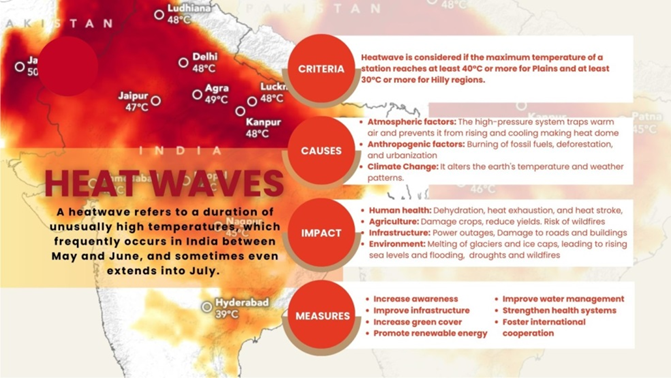Context:
Recognising the importance of playful interactions among children, the United Nations declared June 11, 2024, as International Day of Play.
Play: A Universal Right
- Importance of Play : Play transcends national, cultural, and socio-economic boundaries. According to UNICEF, it is vital for children to build social connections, develop physical and mental health, and enhance creativity. Article 31 of the United Nations Convention on the Rights of the Child enshrines the right to play, highlighting its significance for a child's well-being and development. Playful interactions contribute to the positive mental health of parents, caregivers, and children, offering respite from adverse experiences and serving as a means to process and explore the world.
- Deprivation of Play : Despite its importance, children are often deprived of this right. The 'Value of Play' report by The Real Play Coalition (IKEA, the LEGO Foundation, National Geographic, and Unilever) reveals that globally, one in five children does not have time to play, and one in 10 children gets no outdoor play. In India, leisure and access to public spaces to play are linked to socio-economic disparities and social identity, including caste, class, disability, and gender. Unfortunately, climate change is emerging as a fierce competitor to these barriers. With extreme weather events and rising temperatures, climate change is limiting the time children get to engage with their peers and the world around them through play.
India’s Ranking, South Asia’s Problem
- Climate Risk for Children : UNICEF’s Children’s Climate Risk Index (CCRI) report 2021 ranks India 26 out of 163 countries, indicating high climate risk for children. With increasing floods, heatwaves, and droughts, heatwaves, in particular, are making outdoor play unsafe. India has been experiencing more frequent and severe heatwaves, with temperatures soaring to record levels. These extreme conditions not only limit a child's ability to play outdoors but also pose significant health risks. A recent UNICEF analysis revealed that South Asia has the highest percentage of children exposed to extreme high temperatures compared to other regions. In India, heatwaves have led to school closures and restricted outdoor activities to protect children, impacting their physical and mental health long-term.
- Impact on Disadvantaged Children : The lack of play opportunities disproportionately affects children from disadvantaged backgrounds, exacerbating existing inequalities and perpetuating cycles of poverty. Urbanization and environmental degradation are reducing the availability of safe play spaces, especially in low-income communities where playgrounds are often non-existent or poorly maintained.
Overcrowded and small houses further limit opportunities for indoor play. Research shows that limited access to safe play spaces hinders a child's physical and cognitive development, leading to long-term economic impacts such as a less skilled workforce and higher social welfare costs. A global survey on climate anxiety among children and young people has revealed heightened climate-anxiety and disillusionment with government support, impacting their daily lives.
Adaptive Measures
- Bioclimatic Design and Urban Planning : To avoid long-term impacts, bioclimatic design principles should be implemented in playground infrastructure and urban planning strategies. Introducing green spaces and cooling corridors within cities can mitigate the urban heat island effect (intensified by concrete-based construction) and provide safe-play environments for children. Opening time and access to existing infrastructure and green spaces like parks should be expanded. In many Indian cities, local communities and municipal governments enforce park closures during certain times of the day, limiting children's play opportunities. There is often user conflict in public parks along age and socio-economic lines.
- Community Initiatives and Long-Term Solutions : A concerted effort is required to address these issues locally and without discrimination. Local communities can create shaded areas in parks where children can meet and play on warmer days. Long-term solutions should prioritize preserving and adapting vernacular architectural techniques for passive heating and cooling methods. This dimension of planning should be integrated into State Action Plans on Climate Change and city master plans. Special attention should be given to the needs of low-income communities. Slum rehabilitation colonies, for instance, in outer Delhi, have sparse green cover. Playgrounds often become dumping grounds for solid waste, forcing children to spend more time indoors with limited opportunities for socialization and recreation.
- Empowering Children : Children can be powerful champions of change. Providing students with hands-on opportunities and platforms to take concrete actions and play advocacy roles, such as participating in biodiversity mapping and air pollution and water quality assessments, can empower them to understand and address environmental issues. Engaging students in local initiatives around climate, such as carbon-neutral panchayats in Kerala, could be a promising starting point.
Conclusion
The first International Day of Play may have passed, but recognizing the adverse effects of climate change on a child's right to play and taking action is crucial. By addressing this issue, we support children's development and well-being while fostering a generation prepared to tackle future challenges. Climate change is limiting the time children get to engage with their peers and the world around them through play, making it essential to prioritize adaptive measures and empower the younger generation.
|
Probable Questions for UPSC Mains
|
Source: The Hindu








